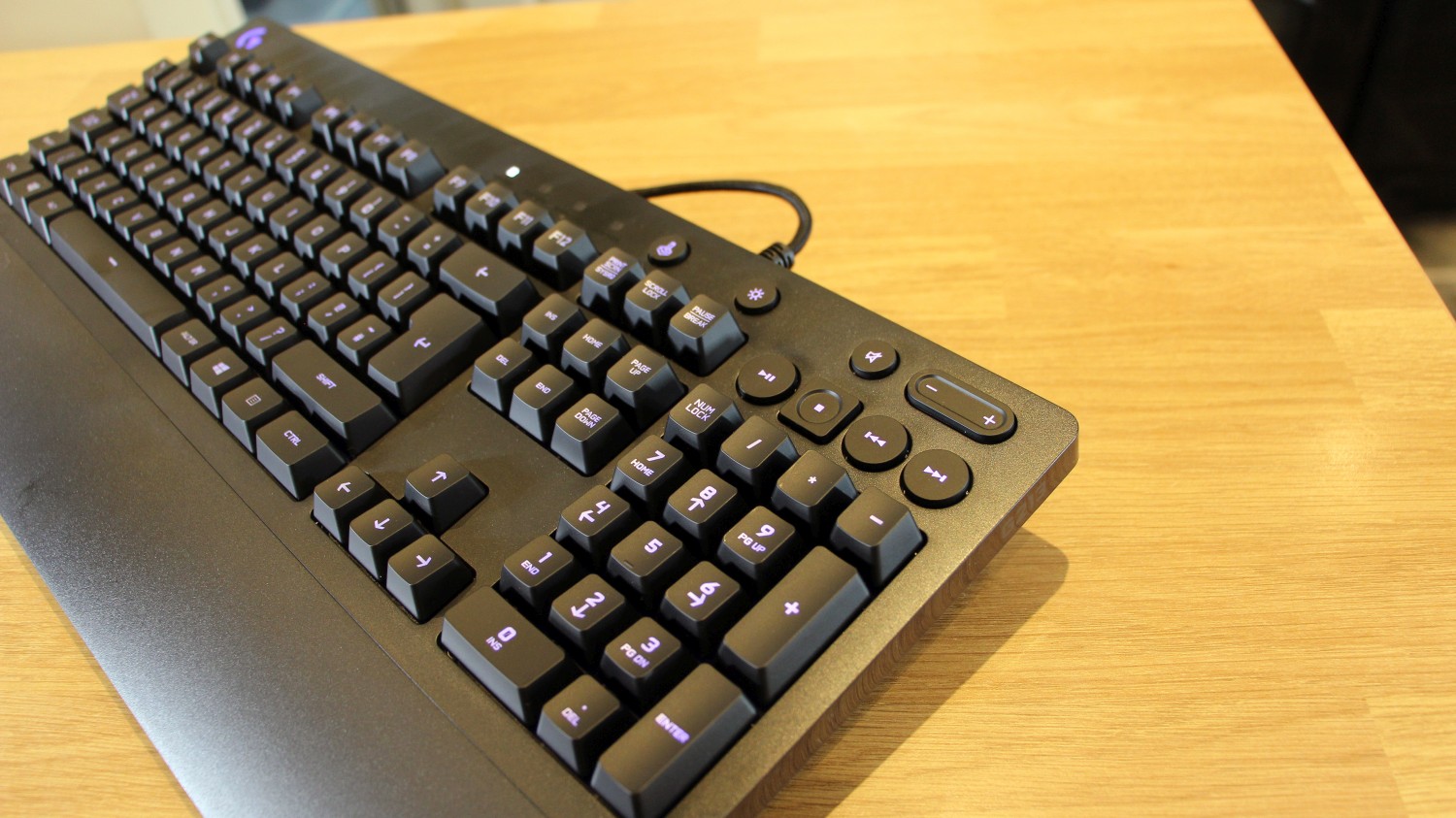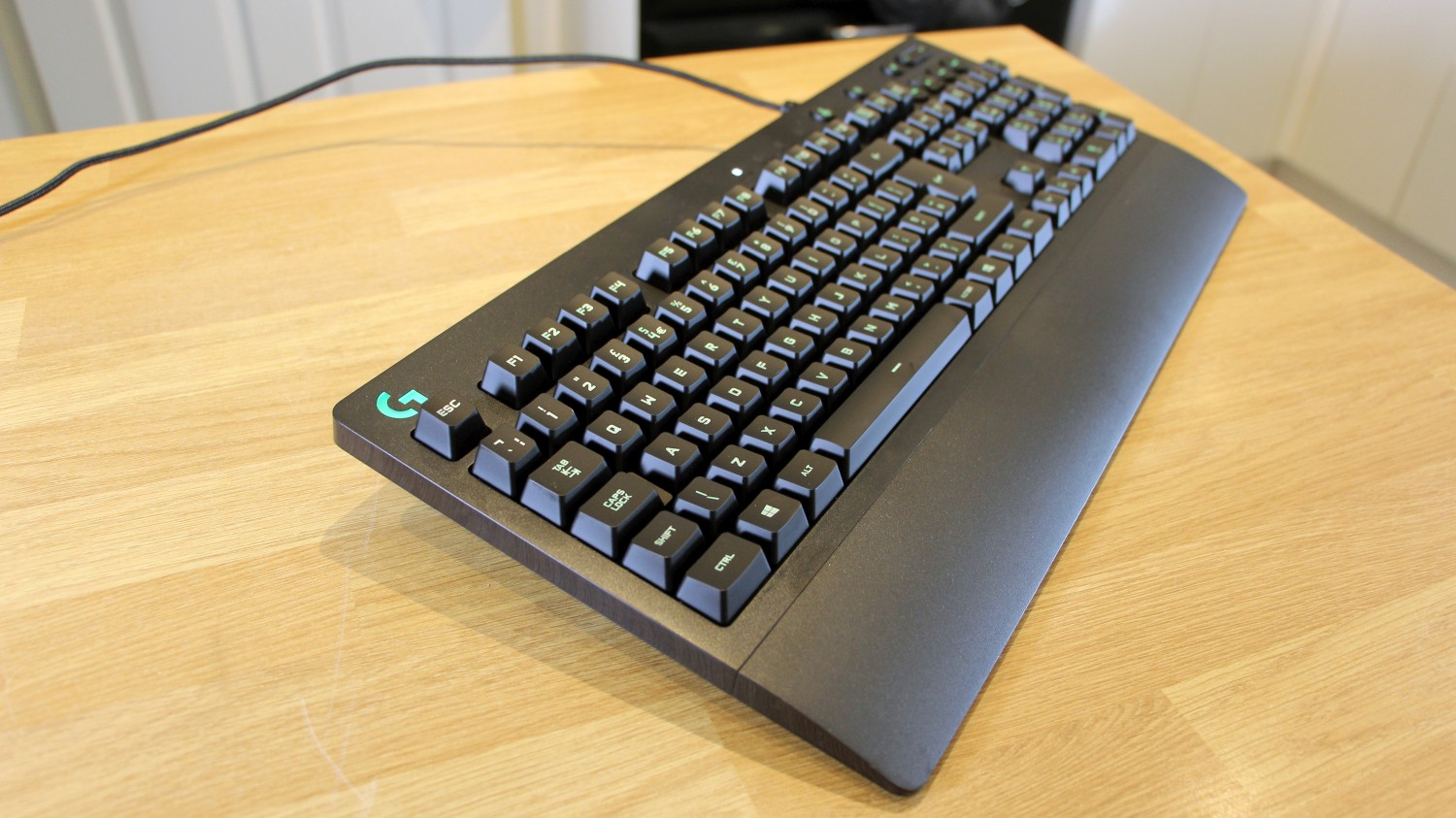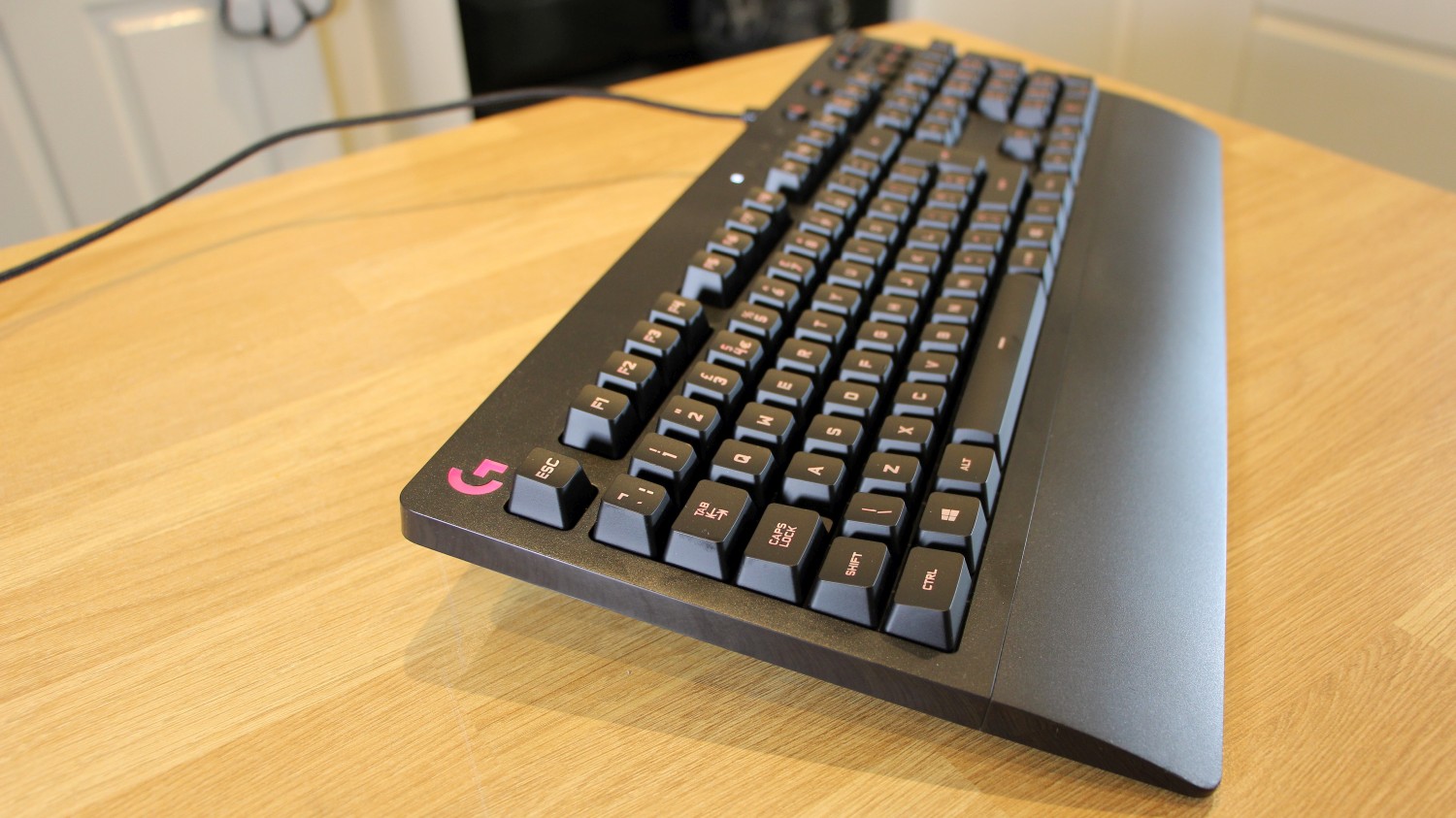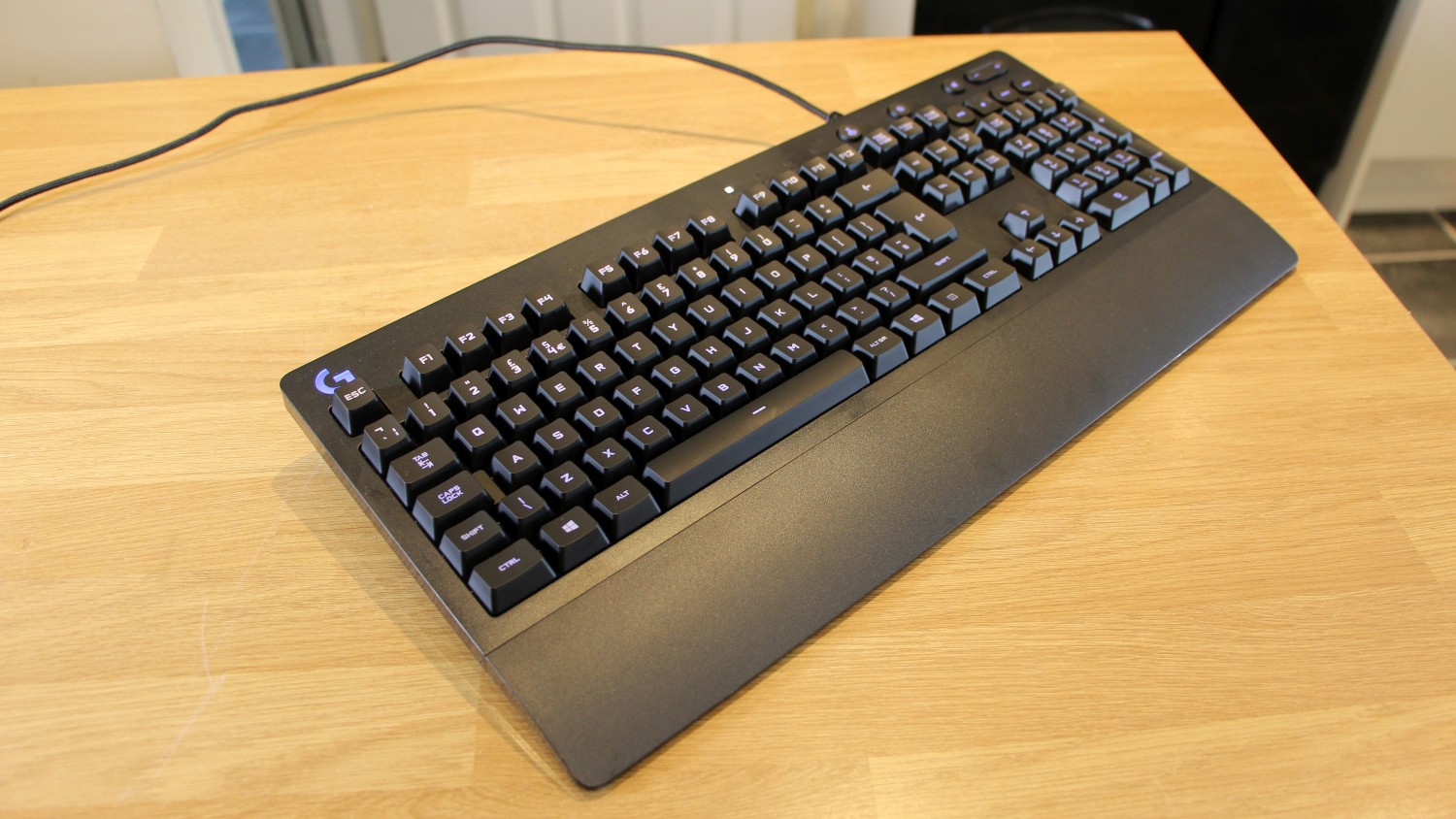TechRadar Verdict
The G213 impresses in several key areas: its mechanical-style typing action is robust and impressive, and it has good features for media playback and day-to-day use. Its build quality and lighting could both be better, though, and it’s physically larger than its rivals.
Pros
- +
Satisfying, impressive typing action
- +
Loads of media keys
- +
Plenty of features elsewhere
Cons
- -
Mediocre build quality
- -
Underwhelming lighting
- -
Larger than rivals
Why you can trust TechRadar
Two-minute review
The Logitech G213 Prodigy is one of the more affordable keyboards around, with a price of $50 (£40, around AU$80). It wasn’t always this way, though – the G213 was originally released at nearly twice the price.
The price drop means that the Logitech G213 Prodigy punches above its weight when compared to similarly-priced rivals like the Razer Cynosa Lite and SteelSeries Apex 3.

The Logitech G213 Prodigy has an impressive collection of features. In the top-right corner it has an array of media buttons, a volume rocker, a Game Mode toggle and a button to switch the lighting on or off. This unit is spill-resistant, and it includes a braided cable. Logitech doesn’t reveal the G213’s rollover rating, but it’s at least ten – so it’s just as good as the Razer, and easily good enough for most gaming situations.
The Logitech G213 Prodigy features RGB LEDs that can be customised across five different zones, and it includes a wrist-rest, but it still manages to look pretty modest, with no over-the-top design. In that sense, it’s well-suited for both gaming and work.
The Logitech G213 Prodigy's feature set also compares reasonably well to rivals. The Razer has one lighting zone, no media keys, no wrist-rest and no braided cable, but it is spill-resistant. The SteelSeries is spill-resistant too, and it has ten-zone lighting, 24-key rollover and a removable wrist-rest, but no Game Mode and fewer media keys.
The Logitech G213 Prodigy may have good features, but it’s not perfect. Its wrist-rest isn’t removable, which means it’s 218mm deep and 452mm wide – bigger than both rivals. There’s no USB pass-through. Build quality is only mediocre: its plastic easily creaks back and forward.

The Razer is more robust and it has macro recording on all of its buttons, while the Logitech G213 Prodigy only has macro recording on the function row.
Sign up for breaking news, reviews, opinion, top tech deals, and more.
The Logitech G213 Prodigy's lighting is also mixed. The G213 may have five zones, which means solid versatility, but the lighting itself is a little weak and inconsistent. It’s better than the Razer’s illumination, but the SteelSeries had stronger lettering and an extra glow beneath the keys.
On the inside, the G213 has membrane keys rather than mechanical buttons – no surprise at this price. The keys are designed to mimic mechanical units, and have 4mm of travel distance and a 50g actuation force. They also have a noticeable tactile bump in their action, just like many mechanical devices.

The Logitech G213 Prodigy's buttons are tall and heavy – in that respect they’re very similar to most mechanical keyboards. They’re firm, with a noticeable bump when they bottom out, and they’re quick.
The heavy, satisfying and solid action will easily cope with mainstream gaming and esports.
They’re also very different to rivals. The Razer’s buttons are softer, lighter and shorter – very similar. The SteelSeries keys are more closely matched, but they’re noticeably bouncier than the G213. That characteristic will irritate some users.
As ever, the Logitech G213 Prodigy’s keys don’t compare to proper mechanical hardware: these buttons may be tall, heavy and firm, but a mechanical keyboard will have more snap and heft. Also bear in mind that you could find a basic mechanical keyboard for only thirty dollars or pounds more.
Buy it if...
You’d prefer a keyboard that feels like a mechanical unit
The Logitech G213 Prodigy is a membrane keyboard, so it doesn’t have the speed and snap of a mechanical device – but it comes closer than either rival. The G213’s buttons are tall, fast and satisfying, and able to handle any mainstream game.
You’re searching for a device with loads of media controls
The Logitech has loads of media buttons, including a volume rocker – so it has more options here than either competitor. That makes it very handy if you need a keyboard to control music or movies.
You want a unit for work and play
The Logitech G213 Prodigy is well-suited for the office: its typing action is great for writing, it includes a wrist-rest, and its subtle designs means that it won’t look too ostentatious. Those media controls could also help here, and it’s spill-resistant.
Don't buy it if...
You want soft, light buttons on your keyboard
The Logitech G213 Prodigy is designed to mimic mechanical keyboards. That’s great if you prefer weightier typing, but it’s not so hot if you want a keyboard that feels softer and lighter. If that’s your preference, the Razer is better.
You need a sturdy device for frequent travelling
The Logitech G213 Prodigy has loads of features and smart, subtle design, but its plastic body is not particularly strong. We don’t have faith that it’ll last on the road if you need a keyboard to take to LAN parties.
You’d prefer a keyboard with bold lighting
The Logitech’s five-zone lighting sounds good, and in this respect, it is better than the underwhelming Razer. However, the Logitech G213 Prodigy’s lights still aren’t particularly bold or consistent.
- These are the best gaming keyboards
- Check out our Logitech promo codes to get the best deals on Logitech products.
Mike has worked as a technology journalist for more than a decade and has written for most of the UK’s big technology titles alongside numerous global outlets. He loves PCs, laptops and any new hardware, and covers everything from the latest business trends to high-end gaming gear.
